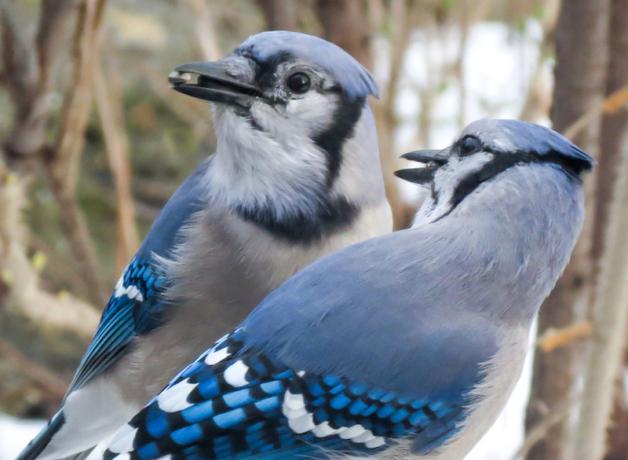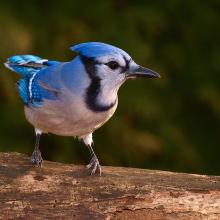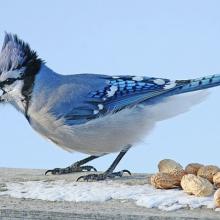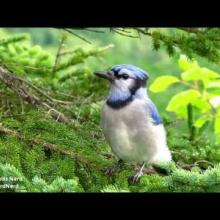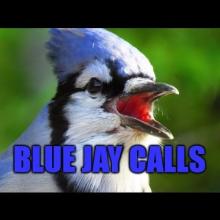

Join BirdNote tomorrow, November 30th!
Illustrator David Sibley and actor H. Jon Benjamin will face off in the bird illustration battle of the century during BirdNote's Year-end Celebration and Auction!
The males and females of many bird species, like these Blue Jays, look identical. And crows, which at least to our eyes, are all the same color and size. But even if we can’t tell male from female, the birds can. Scientists believe crows may be able to tell each other apart by slight variations in their calls, or because they can see differences in each other’s feathers in the ultraviolet spectrum.
Today's show brought to you by the Bobolink Foundation.
BirdNote®
Do Male and Female Birds Always Look Different?
Written by Bob Sundstrom
[Northern Cardinal song, in background, https://macaulaylibrary.org/audio/134151, 0.15-.25]
This is BirdNote.
In many species of birds, the male is far more colorful than the female.
[Northern Cardinal song]
[bird singing in background, duck under]
For instance, this male Northern Cardinal is a stunning bright red. While his mate [[female Northern Cardinal sound… https://macaulaylibrary.org/asset/67071581 or https://macaulaylibrary.org/asset/56473211 ]] ...is more subdued.
[American Crow call, https://macaulaylibrary.org/audio/100700, 0.06-.08 and bill rattle, https://macaulaylibrary.org/audio/50118, 0.46-47]
But the males and females of many bird species look identical. You need look no further than the nearest flock of crows. They are all the same color and size — and all pretty much a mystery as to sex. At least to our** eyes. The same is true of many common birds, from Song Sparrows to Blue Jays to Cedar Waxwings.
[[https://macaulaylibrary.org/asset/64015841 or https://macaulaylibrary.org/asset/63586181 ]]
Just how such variety has evolved, even among closely related species, is a topic of great scientific complexity. And advancements in technology reveal that birds that look** similar may actually be quite different genetically.
But even if we can’t tell who’s who, the birds can. Some scientists think crows may be able to tell each other apart by slight variations in their calls. [caw caw] And it’s probable that crows and many other birds see differences in each other’s feathers in the ultraviolet spectrum. Feathers that to us* just look black.
There’s still so much that we have to learn about birds.
For BirdNote, I’m Mary McCann.
Today’s show brought to you by the Bobolink Foundation.
###
Bird sounds provided by The Macaulay Library of Natural Sounds at the Cornell Lab of Ornithology, Ithaca, New York. Recorded by Gerrit Vyn, Wilbur L Hershberger, Geoffrey A Keller, Brad Walker and Kent McFarland.
BirdNote’s theme music was composed and played by Nancy Rumbel and John Kessler.
Producer: John Kessler
Managing Producer: Jason Saul
Associate Producer: Ellen Blackstone
© 2017 Tune In to Nature.org December 2017/2018 Narrator: Mary McCann
ID# plumage-03-2017-12-08 plumage-03
http://northernwoodlands.org/outside_story/article/crow-communication
http://www.smithsonianmag.com/science-nature/drab-female-birds-were-onc…
https://www.sciencedaily.com/releases/2013/12/131219131147.htm
https://www.scientificamerican.com/article/why-are-male-birds-more-c/
https://www.birdwatchingdaily.com/featured-stories/how-the-ability-to-p…
http://www.audubon.org/magazine/may-june-2013/what-makes-bird-vision-so…

